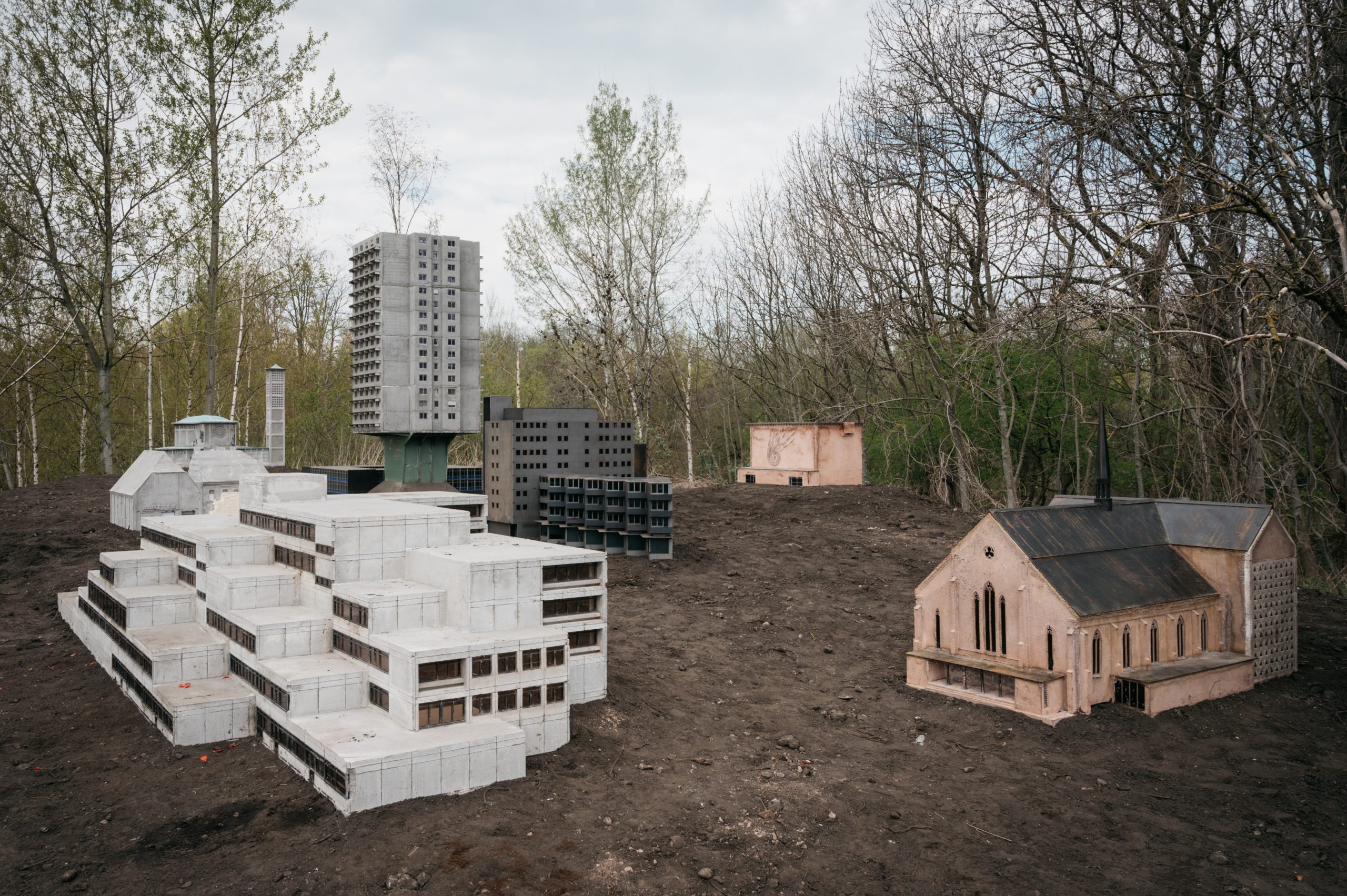
The 19th artwork on the Emscher Art Trail in the city of Duisburg is “Neustadt” by Julius von Bismarck in collaboration with Marta Dyachenko.
Billboard
Skyscrapper
Halfpage
The Emscher Art Trail (Emscherkunstweg) is a permanent collection of art in public spaces. It consists of 18 works of art that everyone can access any time and free of charge. Along the Emscher, a river in the Ruhr area, Germany, one will experience the unique transformation of the river, which significantly accompanies the structural change of the Ruhr region. The 19th artwork on the Emscherkunstweg in the city of Duisburg is “Neustadt” by Julius von Bismarck in collaboration with Marta Dyachenko. The city of demolished houses is a memory machine and utopia at the same time. Since the beginning of May 2021, the installation at Landschaftspark Duisburg-Nord is open to all.
Fictional city in a scale of 1:25
More than two years of planning and research went into the making of “Neustadt”. Von Bismarck, who lives in Berlin, asked Dyachenko, who is an architect and artist, to collaborate with him on the project. After researching the last twenty years of the history of construction, or rather of demolition, in the Ruhr region, they selected 23 no longer existing buildings that they wanted to bring back to life in the form of sculptural models. A stretch of green in the North Duisburg Landscape Park between the Alte Emscher (an arm of the Emscher River), the Grüner Pfad (Green Path) bike path, and the A42 autobahn will now be the home of the fictional city of buildings in a scale of 1:25.
Neustadt: a cross-section of local urban architecture
“Neustadt” is about city life on the Emscher River in the entire Ruhr area. The types of buildings and intended uses were not selected according to a strict system, but rather according to aesthetic and sculptural criteria with the goal of presenting a cross-section of local urban architecture. This means that a late 19th-century historicist apartment building from the city of Essen, Germany, can be found standing next to a residential complex from a model housing development in the city of Marl from 1965. Both of these are in the same neighborhood as models of residential prefab buildings testifying to the social history of the 1970s. Another building among others: the 16-story skyscraper nicknamed the “Weiße Riese” (White Giant) in Kamo-Lintfort, has an especially turbulent history and was finally torn down after standing empty for years to create space for something new.
Reference to ecological issues
“Neustadt” is a “memory machine” that evokes memories beyond our personal experience. It also provokes questions about the development of the urban realm, such as: Why were these buildings demolished? Who gets to decide whether a work of architecture is worth keeping? Economic aspects clearly play an increasingly larger role. Who hasn’t heard the recurring argument that it costs less to construct a new building than to renovate an old one? What most people do not know, however, is that the construction sector is responsible for generating 38% of global carbon dioxide emissions today. Ecological issues are important to von Bismarck and Dyachenko, such as: How can we make construction more sustainable and urban planning more sensible, long-term, and/or flexible?
Medium Rectangle
Halfpage

City of a future that never happened
Von Bismarck and Dyachenko elaborately transformed the buildings into sculptural models using concrete and steel, creating finely detailed ornamental window fixtures, wall reliefs, and countless tiny window panes made of acrylic glass. Although much attention was given to particulars, the artists’ goal was not to create exact, faithful renditions, but to make the buildings recognizable. In their eyes, the original buildings are “visions in concrete” that have been brought back to life in the “city of a future that never happened.” In time, the vegetation will spread into this fictional city, creating a shift in scale as weeds and plants begin to loom large like trees, although several buildings still stand taller than us even when shrunk. The new city of “old buildings” is a place to linger and reflect on the development of our immediate surroundings.
Medium Rectangle
Halfpage


Both Pictures: © Daniel Sadrowski
Permanent collection of outstanding public artworks
The Emscherkunstweg is a cooperation between Urbane Künste Ruhr (Ruhr Urban Arts), the Emschergenossenschaft (Emscher River Basin Management), and the Regionalverband Ruhr (Ruhr Regional Association) under the patronage of Isabel Pfeiffer-Poensgen, Minister of Culture and Science of the State of North-Rhine Westphalia. The trail with sculptures along the path was born out of a temporary exhibition series called “Emscherkunst” (Emscher Art) and has evolved parallel to the transformation of the Emscher River by the Emschergenossenschaft. The goal of the Emscher Art Trail project is to establish a permanent collection of outstanding public artworks.
For more information click here.
Text Credits: Emscherkunstweg, Urbane Künste Ruhr












